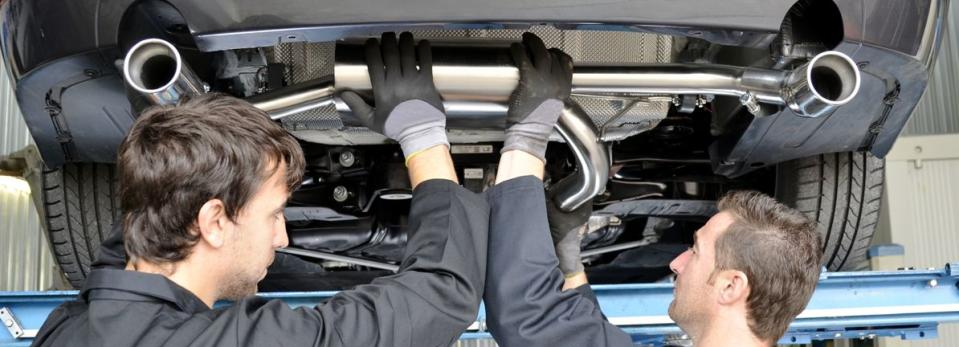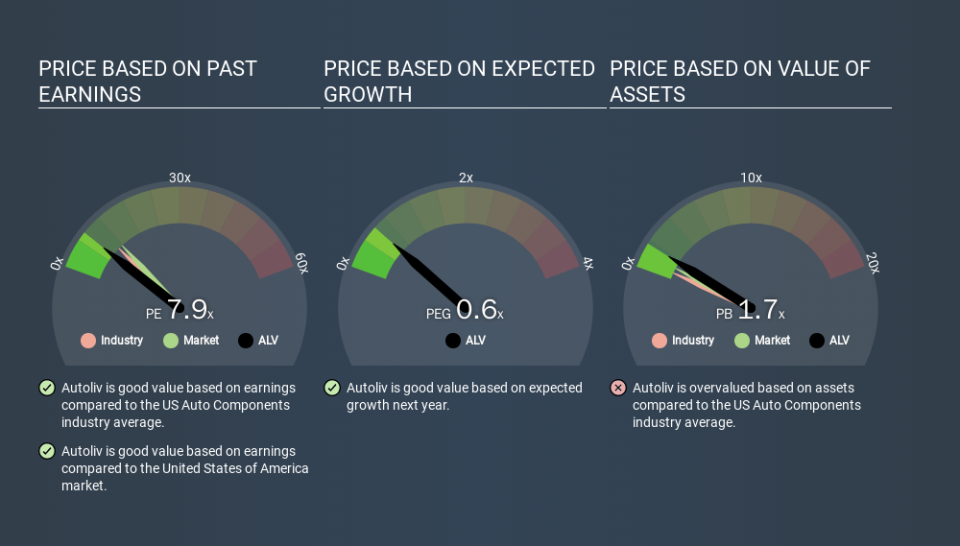A Sliding Share Price Has Us Looking At Autoliv, Inc.'s (NYSE:ALV) P/E Ratio

To the annoyance of some shareholders, Autoliv (NYSE:ALV) shares are down a considerable 45% in the last month. That drop has capped off a tough year for shareholders, with the share price down 43% in that time.
All else being equal, a share price drop should make a stock more attractive to potential investors. In the long term, share prices tend to follow earnings per share, but in the short term prices bounce around in response to short term factors (which are not always obvious). The implication here is that long term investors have an opportunity when expectations of a company are too low. Perhaps the simplest way to get a read on investors' expectations of a business is to look at its Price to Earnings Ratio (PE Ratio). A high P/E ratio means that investors have a high expectation about future growth, while a low P/E ratio means they have low expectations about future growth.
See our latest analysis for Autoliv
Does Autoliv Have A Relatively High Or Low P/E For Its Industry?
Autoliv's P/E of 7.92 indicates relatively low sentiment towards the stock. The image below shows that Autoliv has a lower P/E than the average (10.6) P/E for companies in the auto components industry.
Autoliv's P/E tells us that market participants think it will not fare as well as its peers in the same industry. Since the market seems unimpressed with Autoliv, it's quite possible it could surprise on the upside. It is arguably worth checking if insiders are buying shares, because that might imply they believe the stock is undervalued.
How Growth Rates Impact P/E Ratios
If earnings fall then in the future the 'E' will be lower. That means even if the current P/E is low, it will increase over time if the share price stays flat. So while a stock may look cheap based on past earnings, it could be expensive based on future earnings.
Autoliv increased earnings per share by an impressive 23% over the last twelve months. In contrast, EPS has decreased by 5.8%, annually, over 3 years.
Don't Forget: The P/E Does Not Account For Debt or Bank Deposits
Don't forget that the P/E ratio considers market capitalization. That means it doesn't take debt or cash into account. The exact same company would hypothetically deserve a higher P/E ratio if it had a strong balance sheet, than if it had a weak one with lots of debt, because a cashed up company can spend on growth.
Such expenditure might be good or bad, in the long term, but the point here is that the balance sheet is not reflected by this ratio.
So What Does Autoliv's Balance Sheet Tell Us?
Autoliv's net debt equates to 45% of its market capitalization. While that's enough to warrant consideration, it doesn't really concern us.
The Verdict On Autoliv's P/E Ratio
Autoliv has a P/E of 7.9. That's below the average in the US market, which is 12.2. The company hasn't stretched its balance sheet, and earnings growth was good last year. If the company can continue to grow earnings, then the current P/E may be unjustifiably low. What can be absolutely certain is that the market has become more pessimistic about Autoliv over the last month, with the P/E ratio falling from 14.5 back then to 7.9 today. For those who prefer invest in growth, this stock apparently offers limited promise, but the deep value investors may find the pessimism around this stock enticing.
When the market is wrong about a stock, it gives savvy investors an opportunity. If the reality for a company is not as bad as the P/E ratio indicates, then the share price should increase as the market realizes this. So this free report on the analyst consensus forecasts could help you make a master move on this stock.
Of course you might be able to find a better stock than Autoliv. So you may wish to see this free collection of other companies that have grown earnings strongly.
If you spot an error that warrants correction, please contact the editor at editorial-team@simplywallst.com. This article by Simply Wall St is general in nature. It does not constitute a recommendation to buy or sell any stock, and does not take account of your objectives, or your financial situation. Simply Wall St has no position in the stocks mentioned.
We aim to bring you long-term focused research analysis driven by fundamental data. Note that our analysis may not factor in the latest price-sensitive company announcements or qualitative material. Thank you for reading.

 Yahoo Finance
Yahoo Finance 
